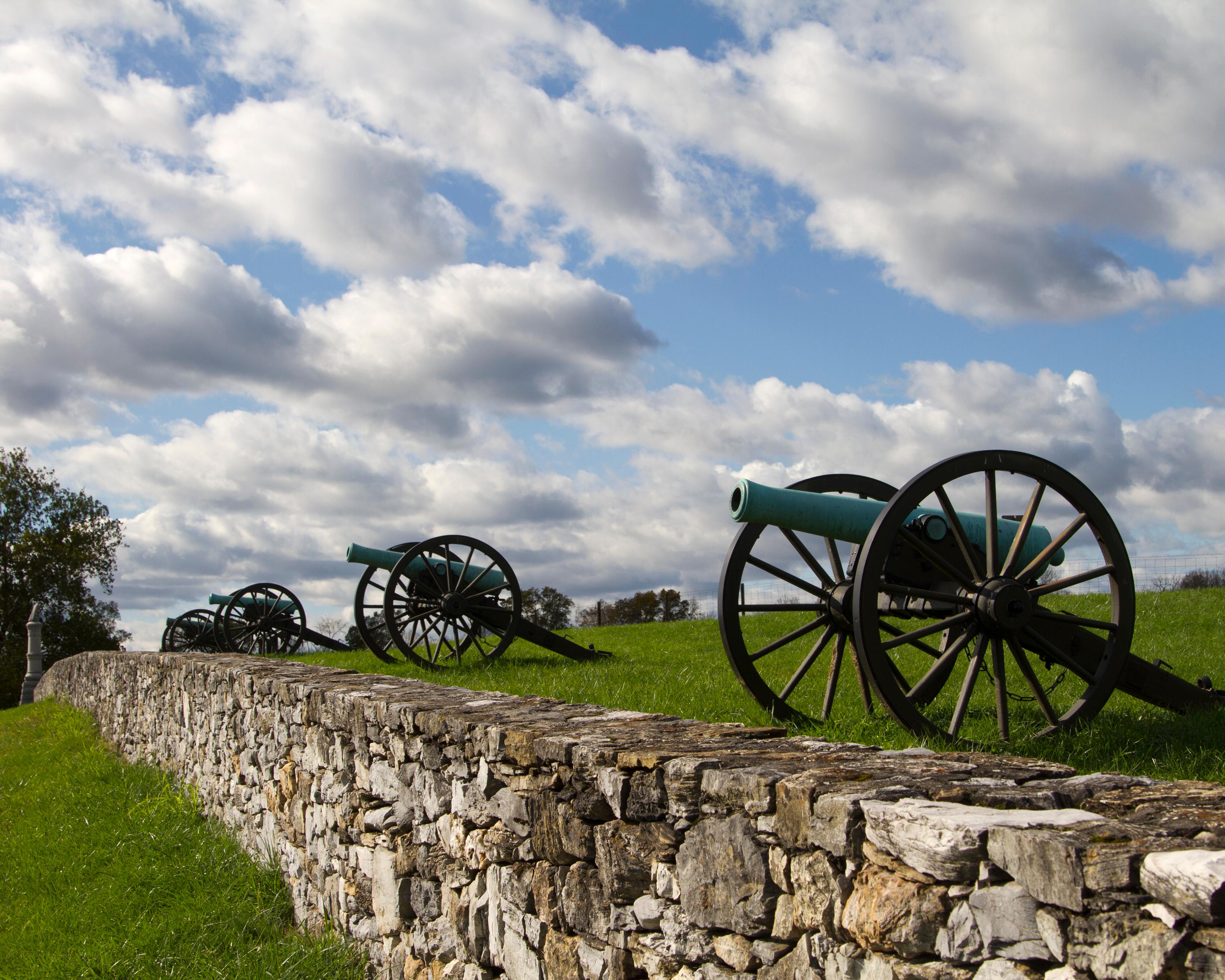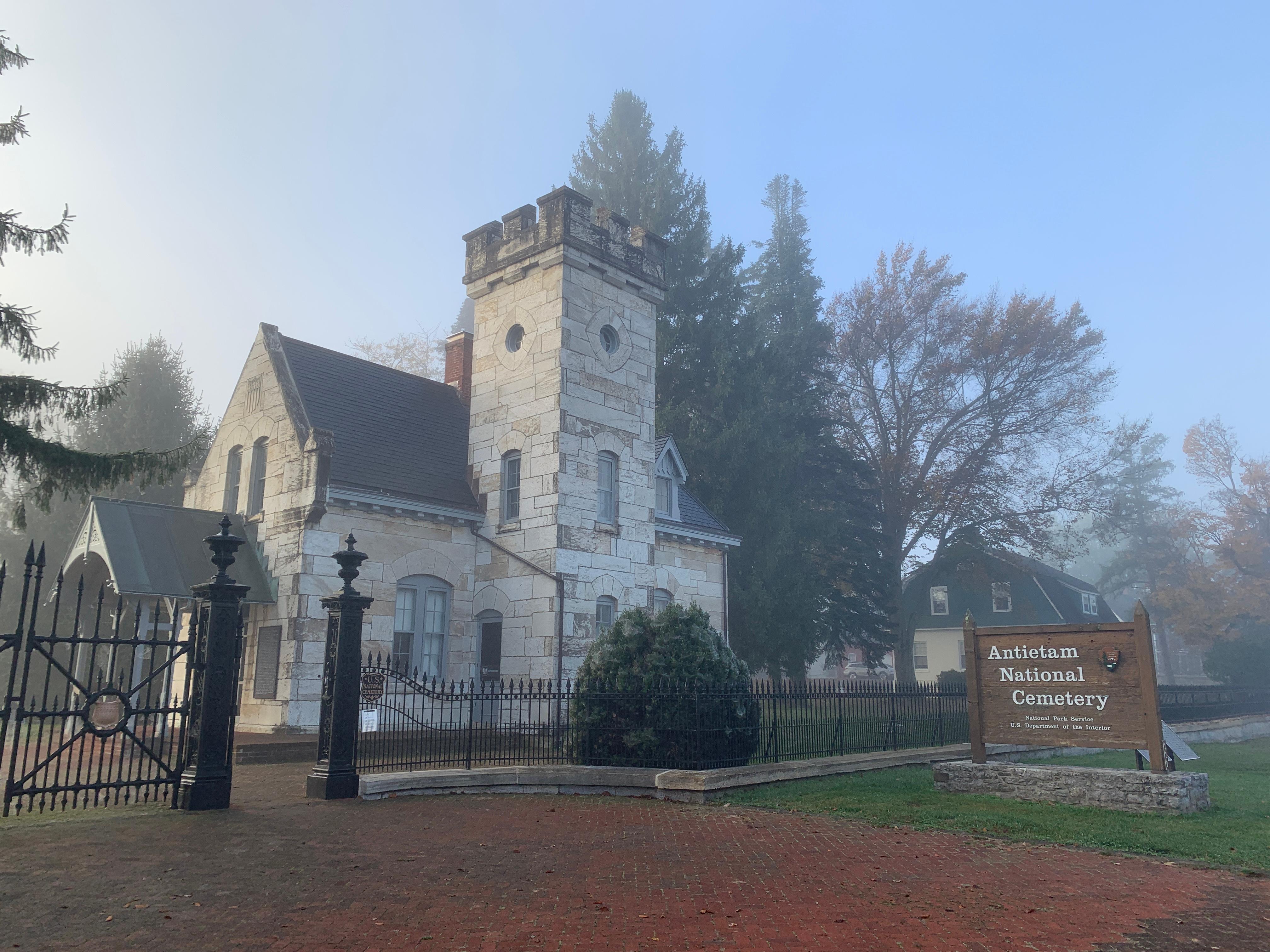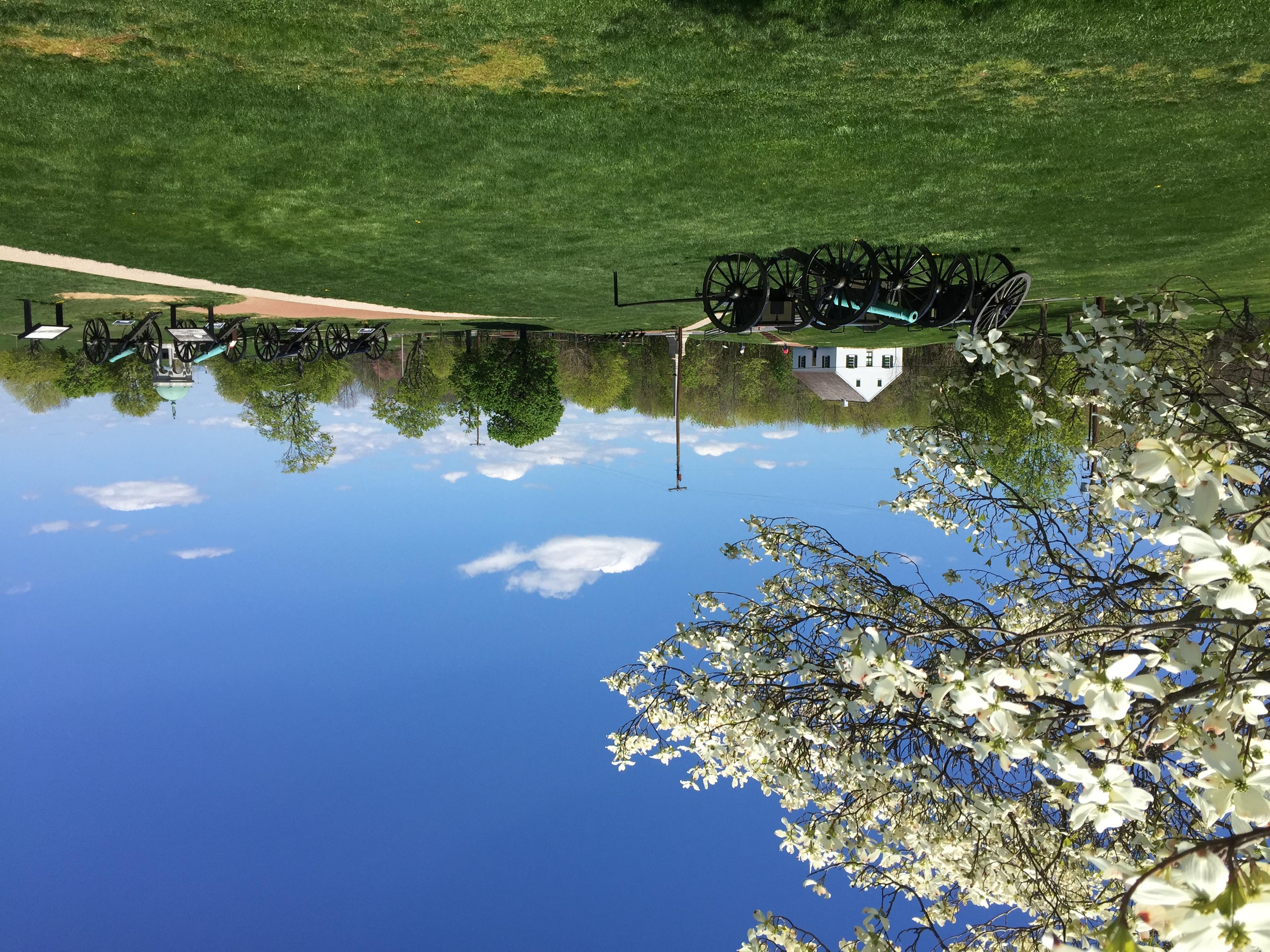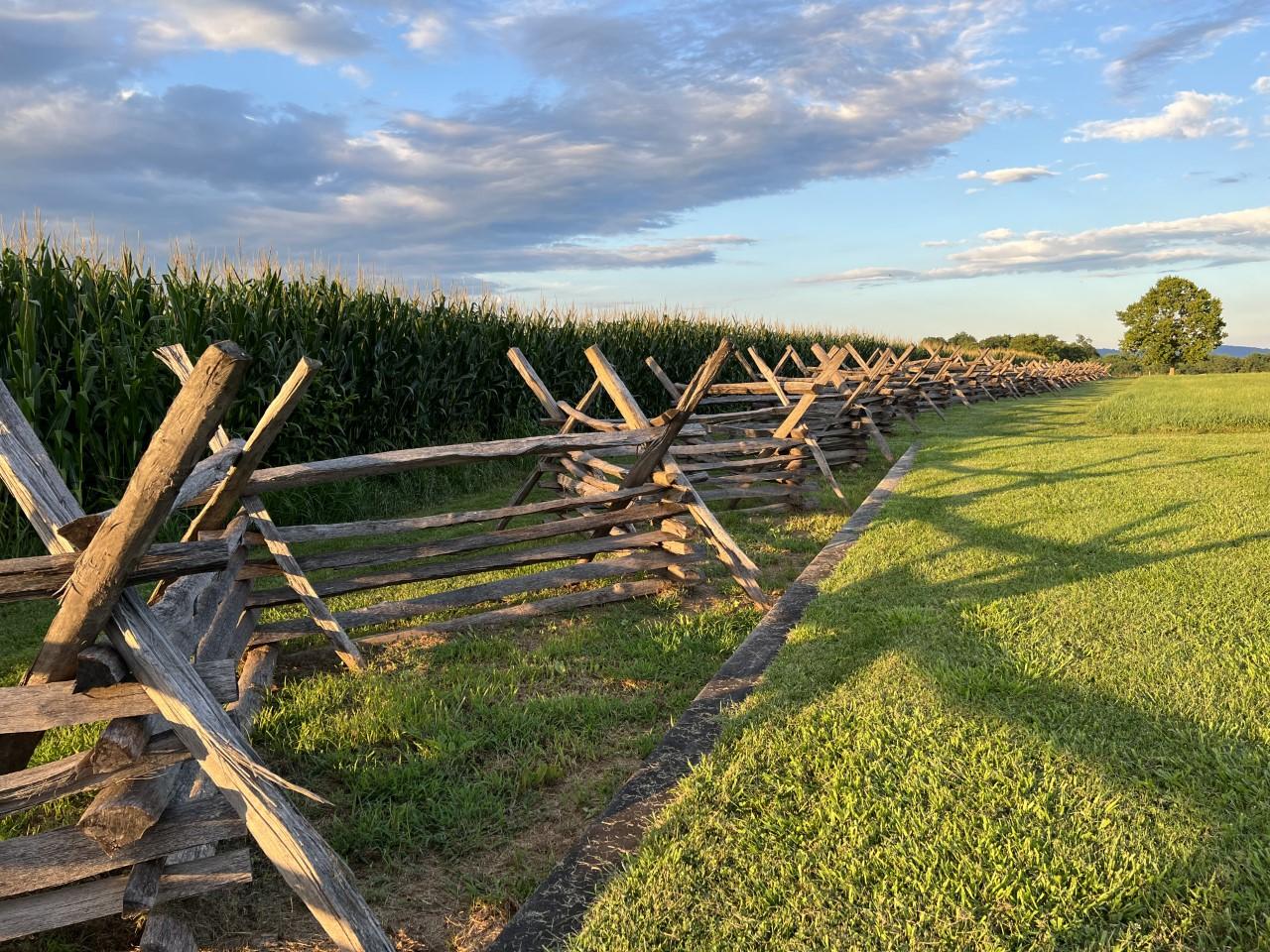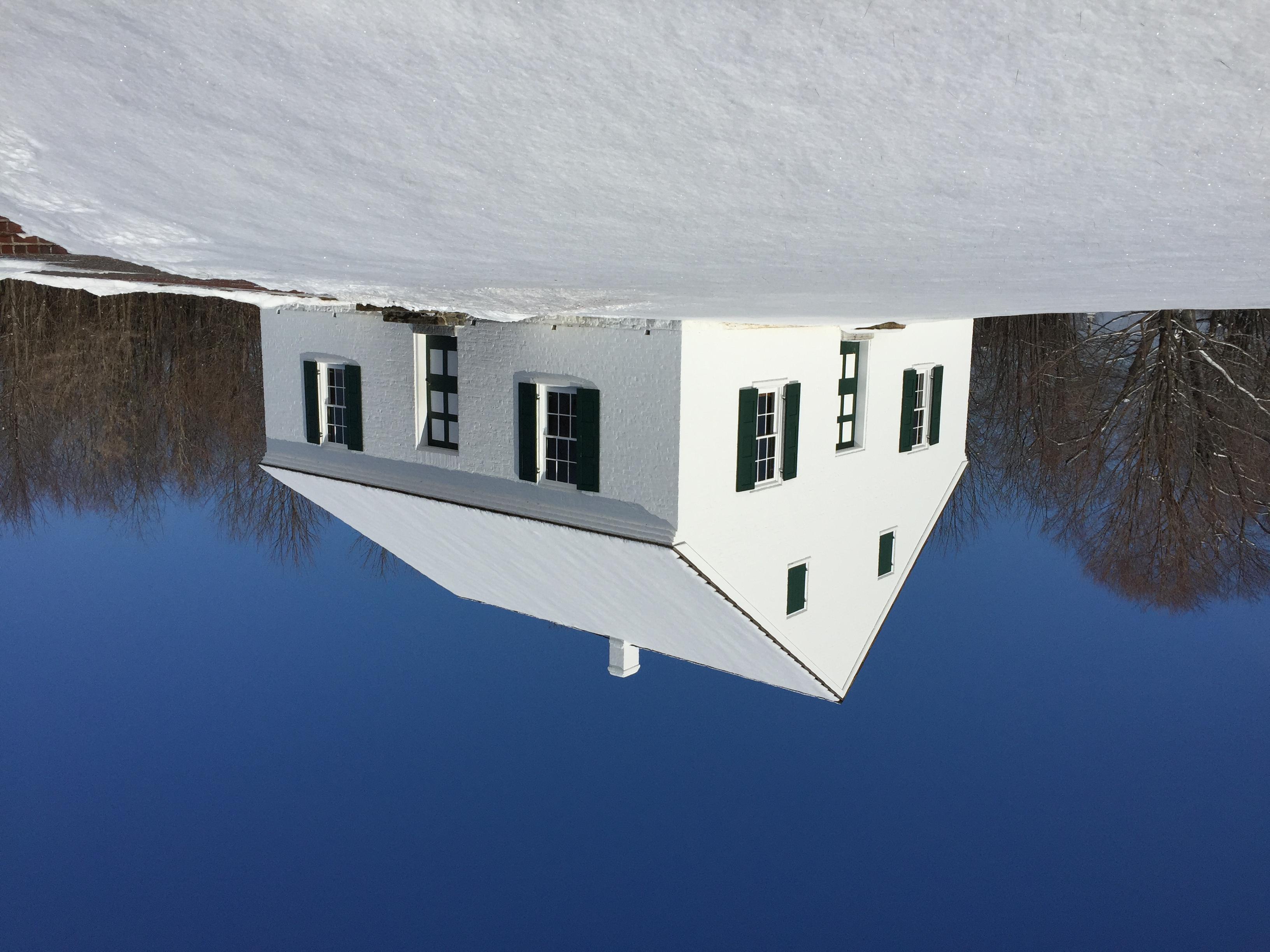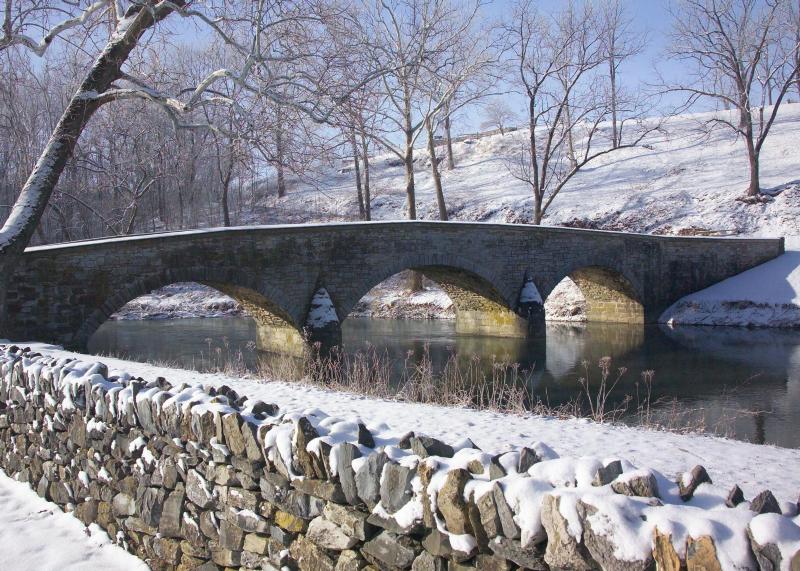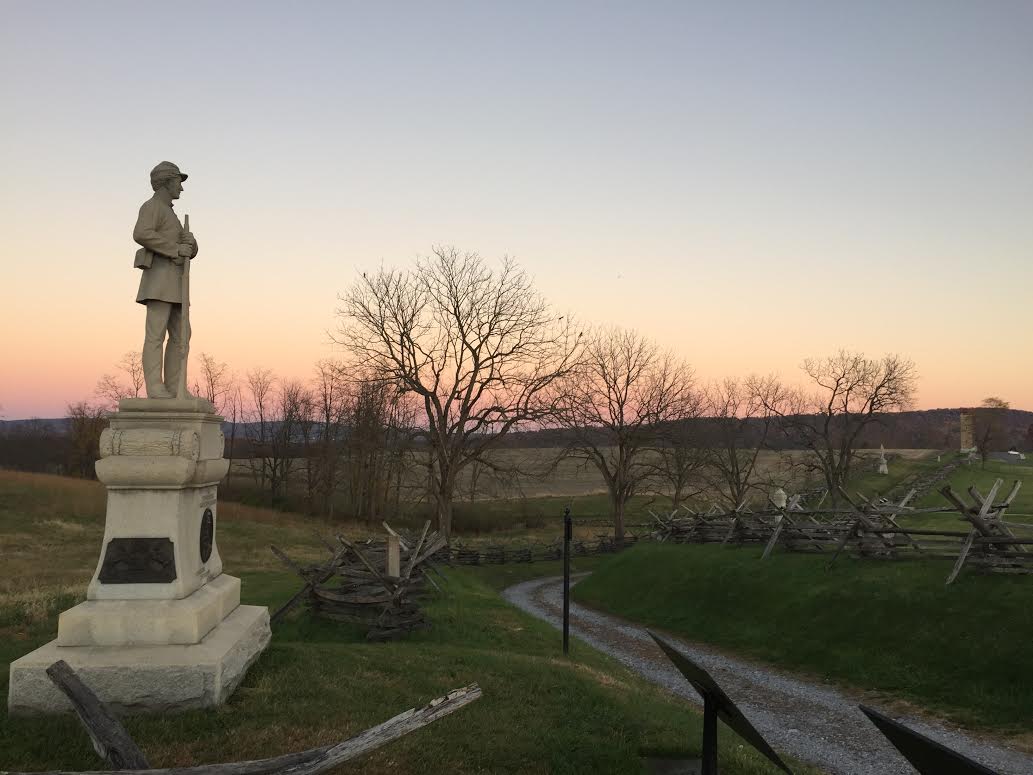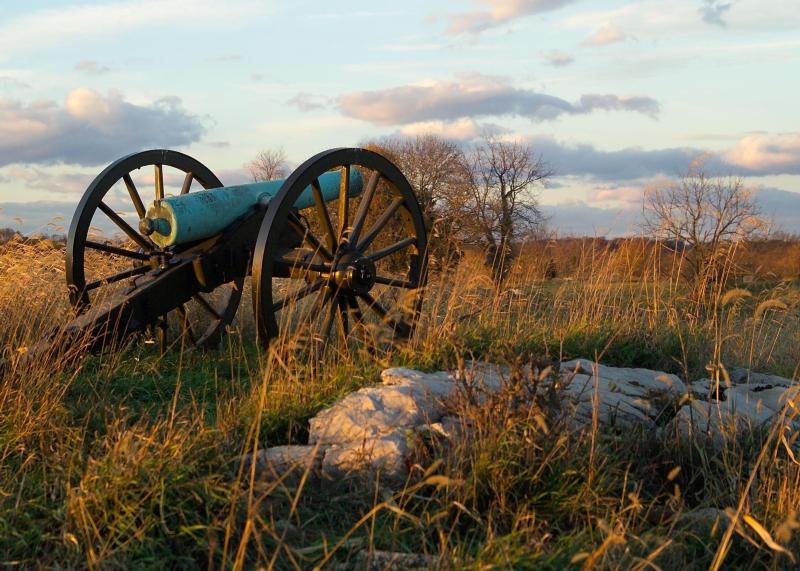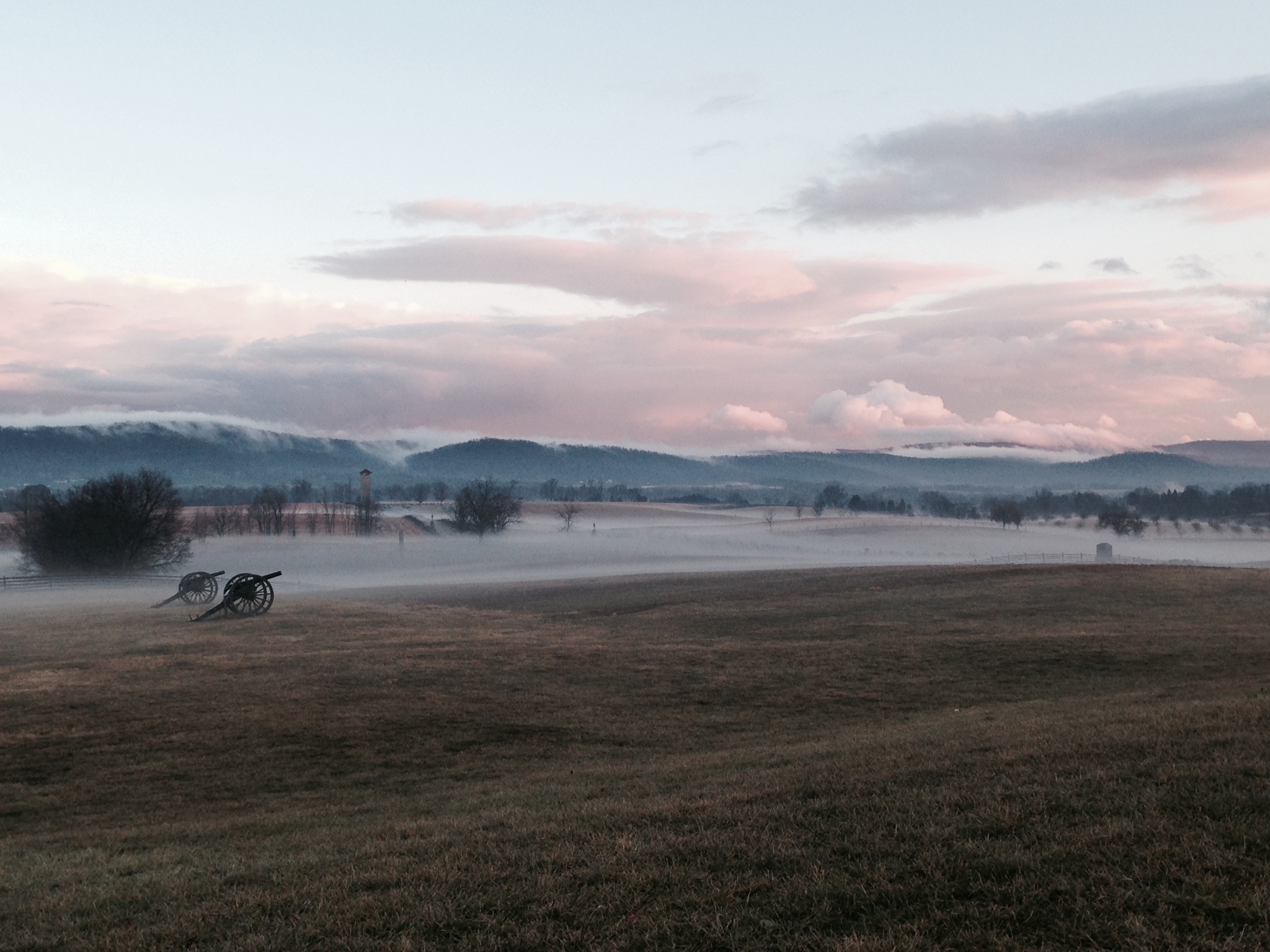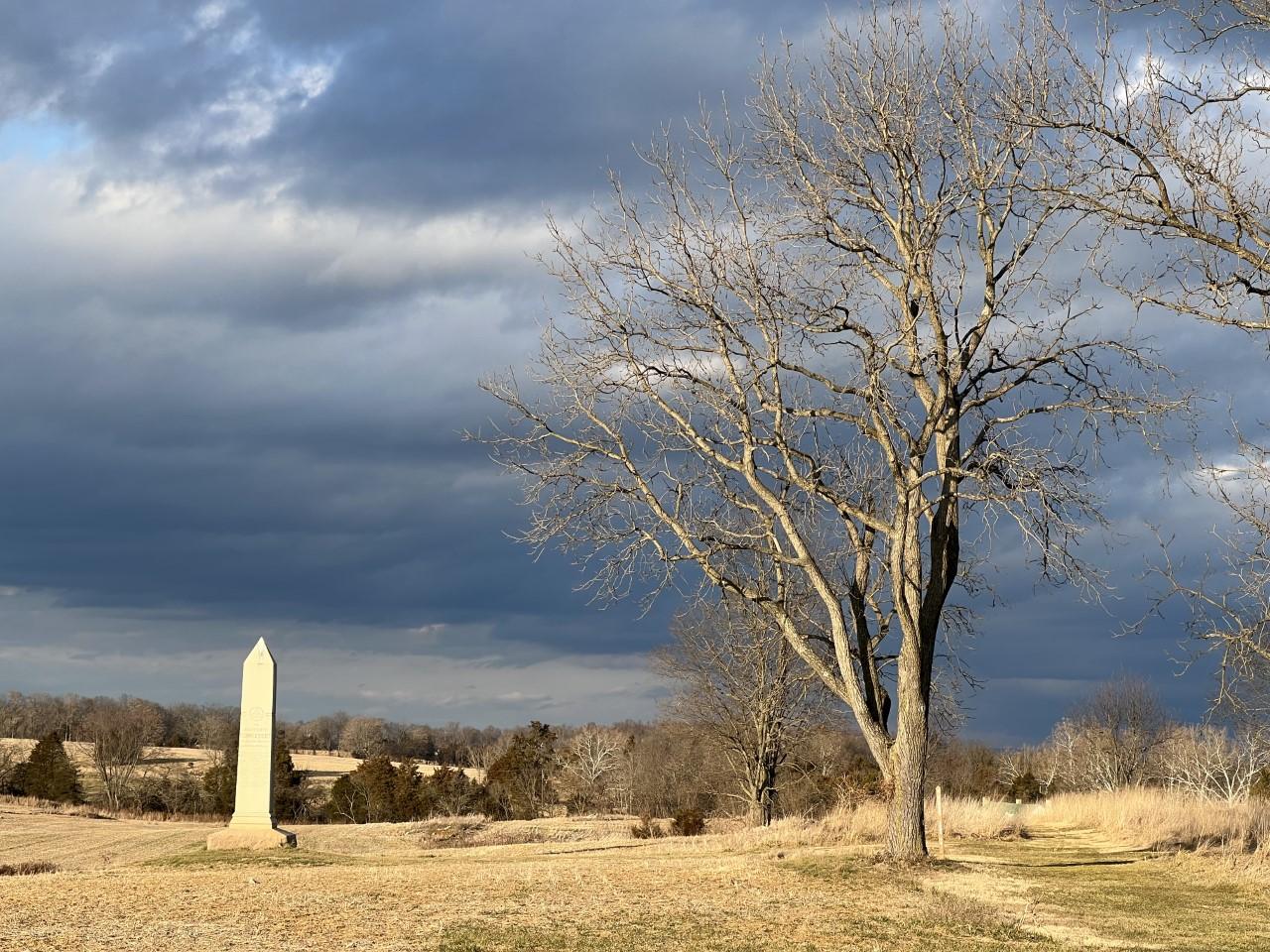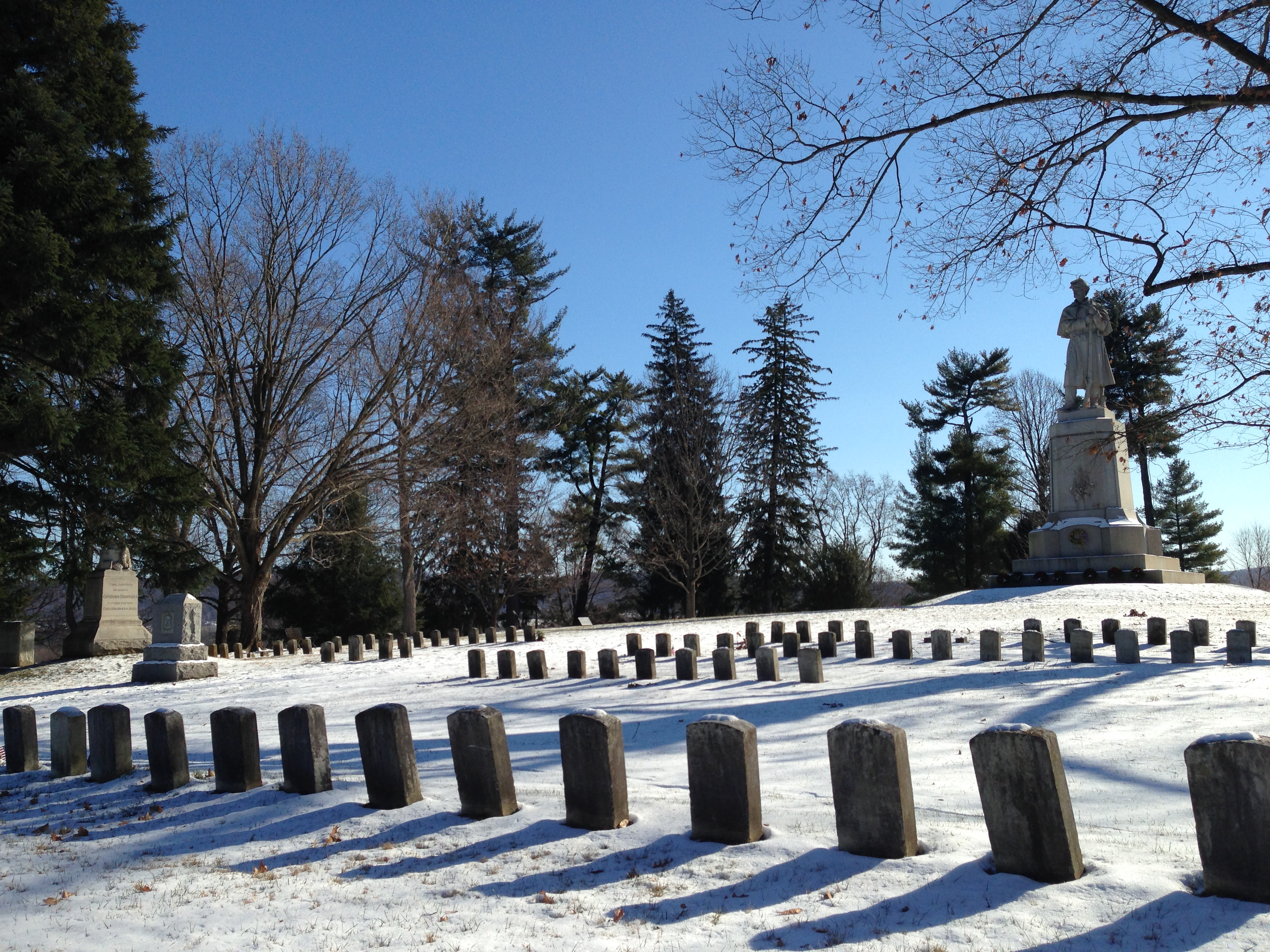23,000 soldiers were killed, wounded or missing after twelve hours of savage combat on September 17, 1862. The Battle of Antietam ended the Confederate Army of Northern Virginia's first invasion into the North and led Abraham Lincoln to issue the preliminary Emancipation Proclamation.
Antietam Cannons
Placing more than 500 cannons on high ground, both armies were able to effectively strike enemy troop positions at great distances.
Antietam National Cemetery Lodge Building
The National Cemetery Lodge Building sits just inside the gates of the cemetery.
Dunker Church
Spring at the Battlefield.
The Cornfield
Looking east along the south edge of The Cornfield.
Dunker Church
The Dunker Church covered in snow.
Burnside Bridge
Burnside Bridge in the snow from the Union side of Antietam Creek.
Monument at Sunset
130th Pennsylvania Monument at Bloody Lane
Cannon the Field
Artillery played a key role at Antietam. Over 500 cannon were involved in the fighting.
Fog Over the Battlefield
View from the visitor center looking toward Bloody Lane at sunset
14th Connecticut Monument
14th Connecticut Monument, just north of the Sunken Road.
Antietam National Cemetery
Private Soldier Monument at the cemetery
Antietam Cannons
Placing more than 500 cannons on high ground, both armies were able to effectively strike enemy troop positions at great distances.
